-
 Bitcoin
Bitcoin $88,339.1961
0.91% -
 Ethereum
Ethereum $1,623.6446
-1.44% -
 Tether USDt
Tether USDt $1.0000
0.00% -
 XRP
XRP $2.0967
-1.79% -
 BNB
BNB $605.9401
0.19% -
 Solana
Solana $139.2951
-0.86% -
 USDC
USDC $0.9999
0.00% -
 Dogecoin
Dogecoin $0.1638
0.91% -
 TRON
TRON $0.2483
1.38% -
 Cardano
Cardano $0.6385
-1.29% -
 Chainlink
Chainlink $13.3308
-1.87% -
 Avalanche
Avalanche $20.1673
-2.64% -
 UNUS SED LEO
UNUS SED LEO $9.0629
-4.15% -
 Stellar
Stellar $0.2460
-5.31% -
 Sui
Sui $2.3030
1.33% -
 Shiba Inu
Shiba Inu $0.0...01249
-1.52% -
 Toncoin
Toncoin $2.9244
-3.95% -
 Hedera
Hedera $0.1729
-0.43% -
 Bitcoin Cash
Bitcoin Cash $346.6981
1.20% -
 Hyperliquid
Hyperliquid $18.1539
-1.20% -
 Litecoin
Litecoin $79.7883
-1.84% -
 Polkadot
Polkadot $3.7535
-5.04% -
 Dai
Dai $0.9999
-0.01% -
 Bitget Token
Bitget Token $4.4438
-1.20% -
 Ethena USDe
Ethena USDe $0.9992
0.00% -
 Pi
Pi $0.6312
-1.10% -
 Monero
Monero $217.0320
0.33% -
 Pepe
Pepe $0.0...08106
3.02% -
 Uniswap
Uniswap $5.3710
-1.84% -
 OKB
OKB $50.9721
-0.22%
How to use reinforcement learning to optimize trading strategies?
Reinforcement learning (RL), a subfield of machine learning, enables automated decision-making in cryptocurrency trading by optimizing returns, adapting to changing markets, and handling large data sets.
Feb 22, 2025 at 10:07 am
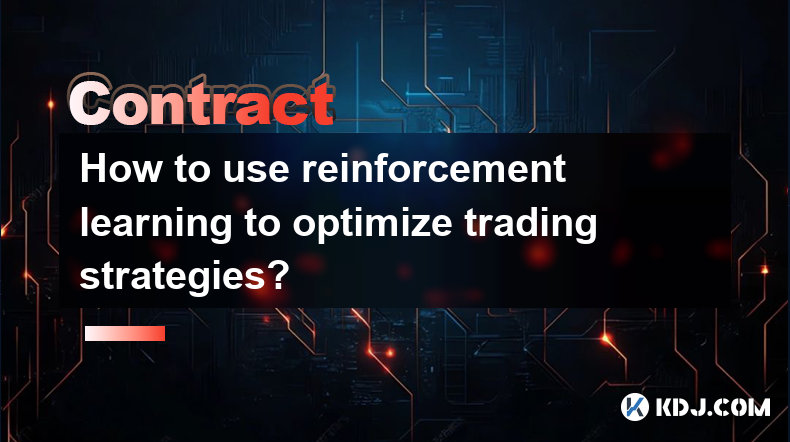
Using Reinforcement Learning to Enhance Cryptocurrency Trading Strategies
Key Points:
- Introduction to Reinforcement Learning (RL)
- Benefits of RL for Cryptocurrency Trading
- Steps to Implement RL in Trading Strategies
- Evaluation Metrics for RL-Based Strategies
- Case Studies of Successful RL Applications
- Challenges and Limitations of RL
- Future Directions in RL for Crypto Trading
Reinforcement Learning (RL) in Cryptocurrency Trading
RL is a subfield of machine learning that leverages trial-and-error learning to train agents to make optimal decisions in complex environments. In cryptocurrency trading, RL algorithms can learn from historical and real-time market data to devise effective trading strategies.
Benefits of RL for Cryptocurrency Trading
- Automated Decision-Making: RL agents can automate trading decisions, eliminating human bias and emotional factors.
- Adaptive to Changing Markets: RL algorithms continuously adapt their strategies based on changing market conditions, unlike traditional rule-based methods.
- Optimization of Returns: RL agents can maximize profits by seeking the best combination of trading parameters, such as entry and exit points.
- Robustness: RL strategies are often more robust than manual approaches due to their ability to handle large amounts of data and complex market conditions.
Steps to Implement RL in Trading Strategies
- Define the Environment: Specify the trading variables, market data sources, and reward function.
- Select the RL Algorithm: Choose an RL algorithm, such as Q-learning or Deep Q-Network (DQN), that suits the trading environment.
- Configure the Training Process: Set hyperparameters for the RL algorithm, including learning rate, batch size, and training duration.
- Train the RL Agent: Train the agent using historical market data, adjusting the strategy as needed based on performance metrics.
- Test and Deploy: Evaluate the trained agent's performance on unseen data and deploy it to execute live trades upon meeting desired criteria.
Evaluation Metrics for RL-Based Strategies
- Annualized Return: Percentage increase in investment value over a given time period.
- Sharpe Ratio: Measures risk-adjusted return, balancing profitability against volatility.
- Maximum Drawdown: Maximum percentage decrease in portfolio value from its peak.
- Calmar Ratio: Similar to Sharpe Ratio, but emphasizes consistency of returns.
- Profit Factor: Ratio of average profit to average loss, indicating profitability over a long period.
Case Studies of Successful RL Applications
- AlphaGo: Google DeepMind's RL algorithm mastered the ancient Chinese board game Go, defeating the world's top human players.
- OpenAI Five: DeepMind's RL agent defeated the world's best Dota 2 professional players in a video game competition.
- Cindicator: A cryptocurrency trading bot that uses RL to analyze market data and make real-time trading decisions.
Challenges and Limitations of RL
- Data Requirements: RL algorithms require large datasets to train effectively, which can be challenging to obtain in low-liquidity markets.
- Computationally Intensive: RL training can be computationally expensive, especially for complex trading environments.
- Overfitting: RL algorithms can overfit to historical data, resulting in poor performance in unseen market conditions.
- Market Manipulation: RL algorithms are vulnerable to manipulation by market participants who can anticipate and exploit their trading patterns.
Future Directions in RL for Crypto Trading
- Integration with Advanced Technologies: Incorporating RL into trading platforms with other technologies, such as natural language processing and computer vision.
- Development of Explainable RL: Creating RL models that provide interpretable explanations for their trading decisions.
- Adaptive Hyperparameters Tuning: Optimizing RL hyperparameters on the fly based on changing market conditions.
FAQs
Q: What are the benefits of using RL for cryptocurrency trading?
A: Benefits include automated decision-making, adaptability to changing markets, optimization of returns, and robustness.
Q: What are the limitations of RL for cryptocurrency trading?
A: Limitations include data requirements, computational intensity, overfitting, and vulnerability to market manipulation.
Q: How do I implement RL in my trading strategies?
A: Steps to implement RL involve defining the trading environment, selecting the RL algorithm, configuring the training process, training the RL agent, and testing and deploying the strategy.
Q: What is the Sharpe Ratio used for?
A: Sharpe Ratio measures the risk-adjusted return of a trading strategy, balancing profitability against volatility.
Q: Can RL algorithms prevent losses in cryptocurrency trading?
A: While RL algorithms can optimize returns and reduce risks, they do not guarantee profit or prevent losses in volatile and unpredictable markets.
Q: Which RL algorithm should I use for cryptocurrency trading?
A: The choice of RL algorithm depends on the specific trading environment and data available. Common algorithms include Q-learning and Deep Q-Networks (DQN).
Q: Is RL the only approach to optimize cryptocurrency trading strategies?
A: While RL is a powerful approach for optimizing trading strategies, alternative methods such as statistical modeling, technical analysis, and fundamental analysis can also be employed.
Disclaimer:info@kdj.com
The information provided is not trading advice. kdj.com does not assume any responsibility for any investments made based on the information provided in this article. Cryptocurrencies are highly volatile and it is highly recommended that you invest with caution after thorough research!
If you believe that the content used on this website infringes your copyright, please contact us immediately (info@kdj.com) and we will delete it promptly.
- AVAX Price Prediction 2025: Will Avalanche Reach New Heights?
- 2025-04-22 17:50:12
- XRP Price Prediction Shows Bullish Momentum After Coinbase Lists Its Futures Contracts
- 2025-04-22 17:50:12
- Bitcoin is surging again, capturing the spotlight in the crypto world.
- 2025-04-22 17:45:12
- Pi Network (PI) Holds Above $0.63: $5 Price Prediction and Whale Accumulation Fuel Optimism
- 2025-04-22 17:45:12
- One of the cryptocurrencies that ranked in the eleventh place, Chainlink, has been in the spotlight as it is traded at $13.12
- 2025-04-22 17:40:12
- Pi Network's Token Structure Promises a Fair Launch
- 2025-04-22 17:40:12
Related knowledge

How does Tail Protection reduce the loss of liquidation?
Apr 11,2025 at 01:50am
Introduction to Tail Protection in CryptocurrencyTail Protection is a mechanism designed to mitigate the risks associated with liquidation in cryptocurrency trading. Liquidation occurs when a trader's position is forcibly closed by the exchange due to insufficient margin to cover potential losses. This often happens in leveraged trading, where traders b...
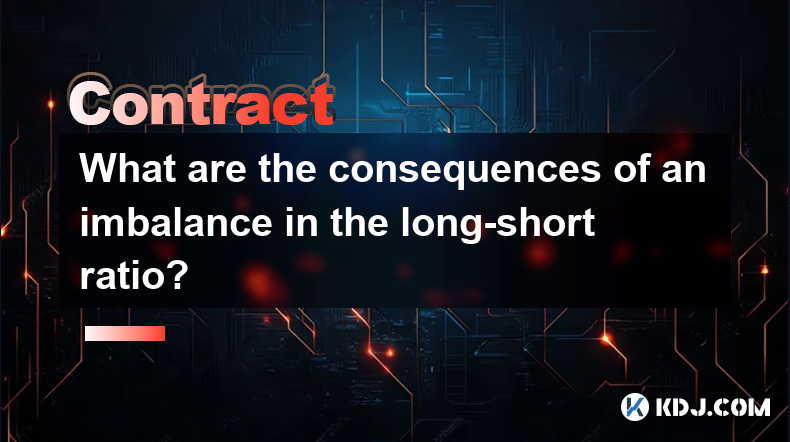
What are the consequences of an imbalance in the long-short ratio?
Apr 13,2025 at 02:50pm
The long-short ratio is a critical metric in the cryptocurrency trading world, reflecting the balance between bullish and bearish sentiments among traders. An imbalance in this ratio can have significant consequences on the market dynamics, affecting everything from price volatility to trading strategies. Understanding these consequences is essential fo...
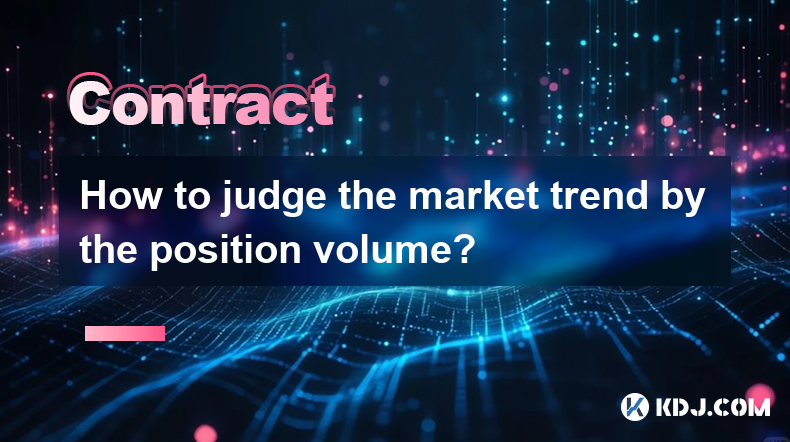
How to judge the market trend by the position volume?
Apr 11,2025 at 02:29pm
Understanding how to judge the market trend by position volume is crucial for any cryptocurrency trader. Position volume, which refers to the total number of open positions in a particular cryptocurrency, can provide valuable insights into market sentiment and potential price movements. By analyzing this data, traders can make more informed decisions ab...

Why does a perpetual contract have no expiration date?
Apr 09,2025 at 08:43pm
Perpetual contracts, also known as perpetual futures or perpetual swaps, are a type of derivative product that has gained significant popularity in the cryptocurrency market. Unlike traditional futures contracts, which have a fixed expiration date, perpetual contracts do not expire. This unique feature raises the question: why does a perpetual contract ...
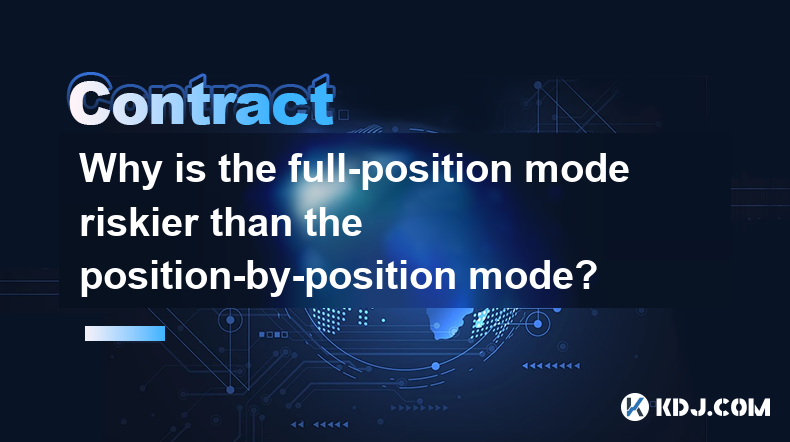
Why is the full-position mode riskier than the position-by-position mode?
Apr 13,2025 at 03:42pm
Why is the Full-Position Mode Riskier Than the Position-by-Position Mode? In the world of cryptocurrency trading, the choice between full-position mode and position-by-position mode can significantly impact the risk profile of a trader's portfolio. Understanding the differences between these two modes is crucial for making informed trading decisions. Th...
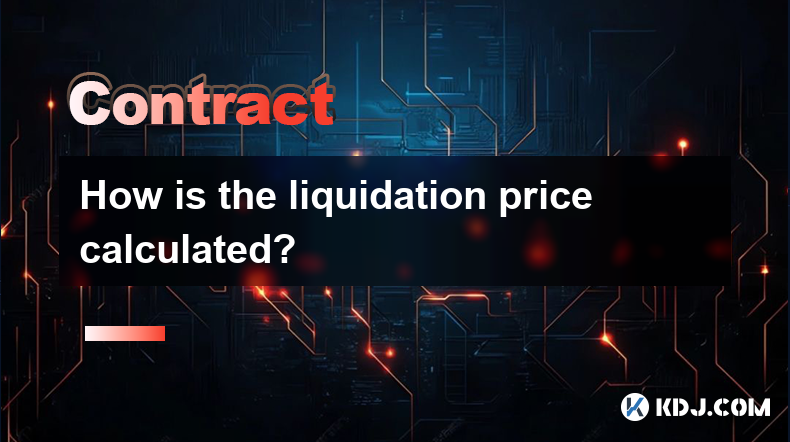
How is the liquidation price calculated?
Apr 12,2025 at 01:35am
Introduction to Liquidation PriceLiquidation price is a critical concept in the world of cryptocurrency trading, particularly when dealing with leveraged positions. Understanding how this price is calculated is essential for traders to manage their risk effectively. The liquidation price is the point at which a trader's position is forcibly closed by th...

How does Tail Protection reduce the loss of liquidation?
Apr 11,2025 at 01:50am
Introduction to Tail Protection in CryptocurrencyTail Protection is a mechanism designed to mitigate the risks associated with liquidation in cryptocurrency trading. Liquidation occurs when a trader's position is forcibly closed by the exchange due to insufficient margin to cover potential losses. This often happens in leveraged trading, where traders b...

What are the consequences of an imbalance in the long-short ratio?
Apr 13,2025 at 02:50pm
The long-short ratio is a critical metric in the cryptocurrency trading world, reflecting the balance between bullish and bearish sentiments among traders. An imbalance in this ratio can have significant consequences on the market dynamics, affecting everything from price volatility to trading strategies. Understanding these consequences is essential fo...

How to judge the market trend by the position volume?
Apr 11,2025 at 02:29pm
Understanding how to judge the market trend by position volume is crucial for any cryptocurrency trader. Position volume, which refers to the total number of open positions in a particular cryptocurrency, can provide valuable insights into market sentiment and potential price movements. By analyzing this data, traders can make more informed decisions ab...

Why does a perpetual contract have no expiration date?
Apr 09,2025 at 08:43pm
Perpetual contracts, also known as perpetual futures or perpetual swaps, are a type of derivative product that has gained significant popularity in the cryptocurrency market. Unlike traditional futures contracts, which have a fixed expiration date, perpetual contracts do not expire. This unique feature raises the question: why does a perpetual contract ...

Why is the full-position mode riskier than the position-by-position mode?
Apr 13,2025 at 03:42pm
Why is the Full-Position Mode Riskier Than the Position-by-Position Mode? In the world of cryptocurrency trading, the choice between full-position mode and position-by-position mode can significantly impact the risk profile of a trader's portfolio. Understanding the differences between these two modes is crucial for making informed trading decisions. Th...

How is the liquidation price calculated?
Apr 12,2025 at 01:35am
Introduction to Liquidation PriceLiquidation price is a critical concept in the world of cryptocurrency trading, particularly when dealing with leveraged positions. Understanding how this price is calculated is essential for traders to manage their risk effectively. The liquidation price is the point at which a trader's position is forcibly closed by th...
See all articles























































































